These quadrilaterals have all parallel sides (two sets).
What are parallelograms, rectangles, rhombuses, and squares?
These quadrilaterals do not always have at least one pair of congruent angles.
Trapezoid
Identify the quadrilateral using its' most specific name based off the information given, and cite the theorem used to make your conclusion.
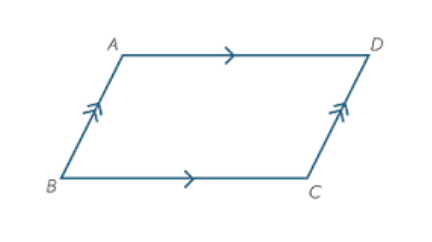
Parallelogram
(T/F): A square is the only quadrilateral whose diagonals are congruent AND bisect each other.
False, square and rectangle
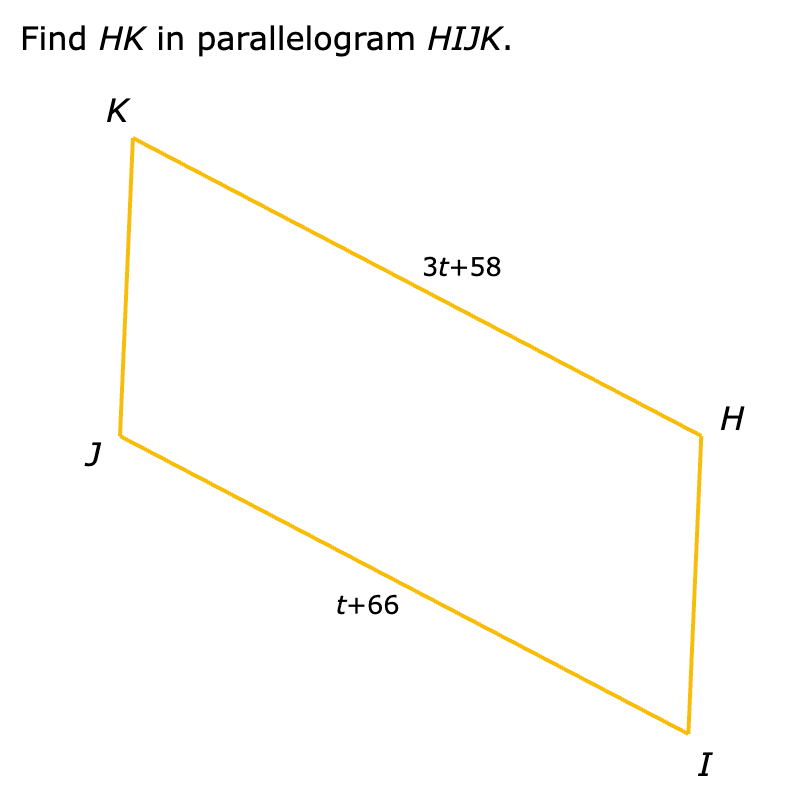
HK=70
These quadrilaterals do not have all parallel sides (one set or no sets).
Trapezoid, Isosceles Trapezoid, Kite
These quadrilaterals do not have congruent diagonals.
parallelograms, rectangles, rhombuses, trapezoids, kites
Identify the quadrilateral using its' most specific name based off the information given, and cite the theorem used to make your conclusion.
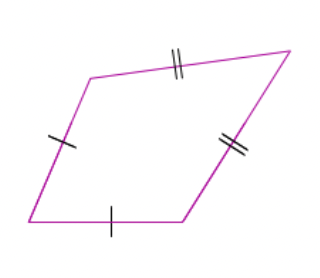
Kite
If a quadrilateral is a square then it is also a rectangle. (t/f)
What is a true statement?
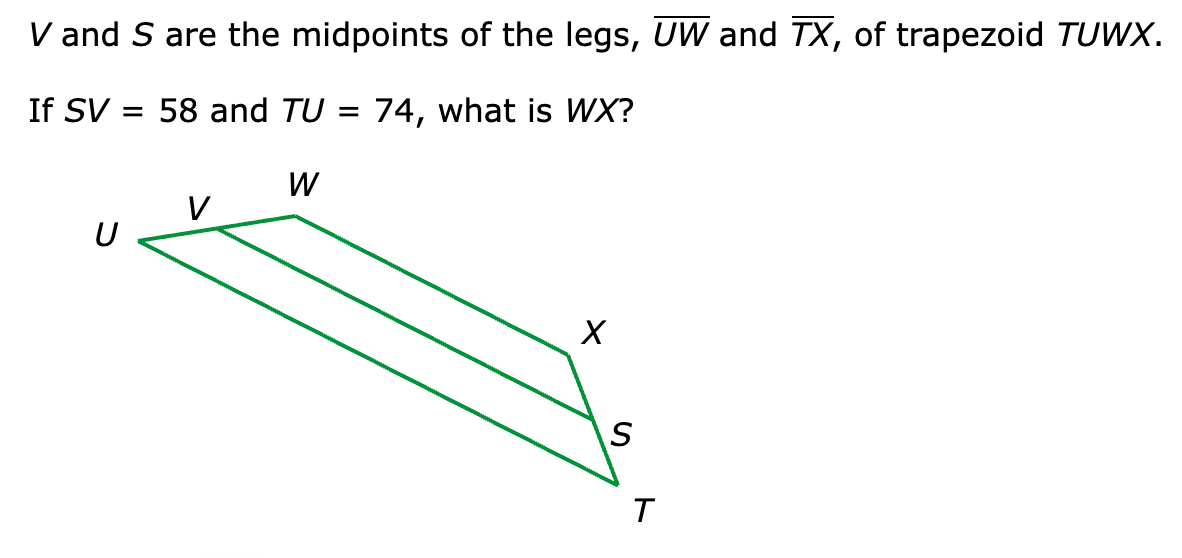
42
These quadrilaterals have all congruent sides.
squares and rhombuses
These quadrilaterals have diagonals that are angle bisectors.
rhombuses and squares
Identify the quadrilateral using its' most specific name based off the information given, and cite the theorem used to make your conclusion.
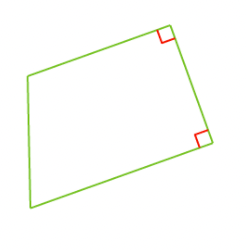
Trapezoid
How do you find the length of the midsegment of a trapezoid?
Take the sum of the bases divided by 2.
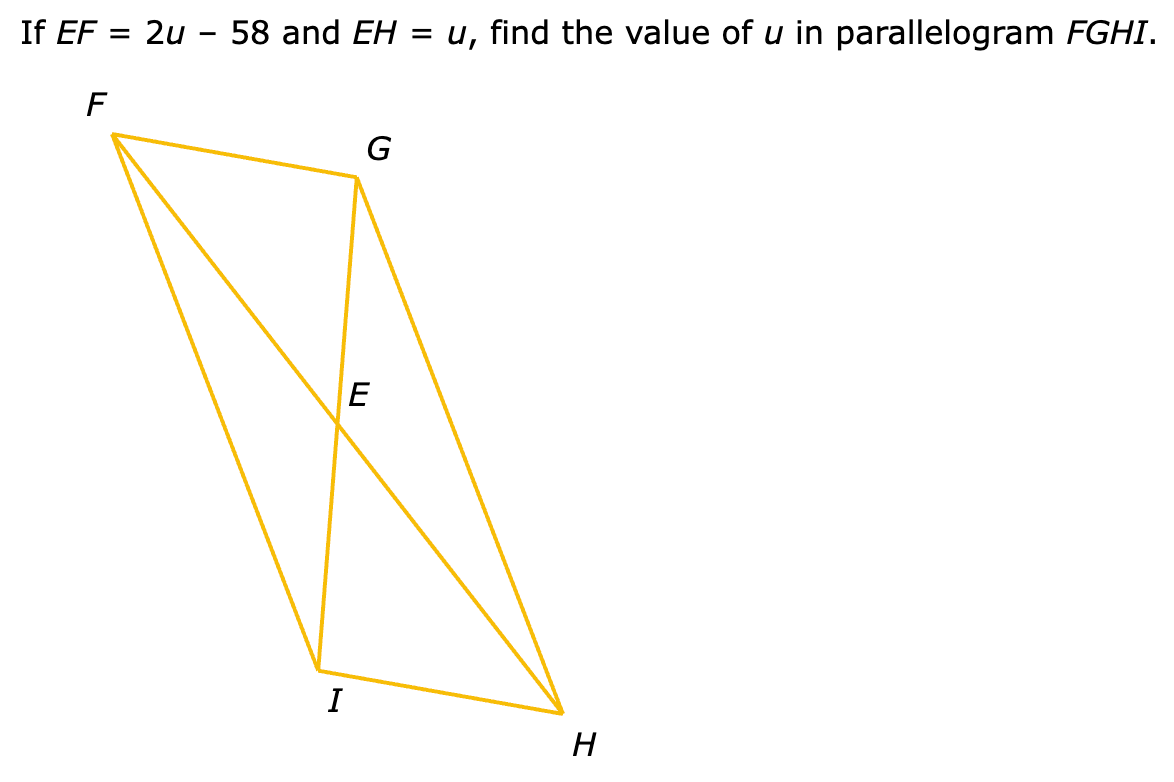
58
These quadrilaterals do not have congruent sides
rectangles, parallelograms, trapezoids, isosceles trapezoid, kite
These quadrilaterals diagonals are perpendicular.
rhombuses, squares, and kites
Identify the quadrilateral using its' most specific name based off the information given, and cite the theorem used to make your conclusion.
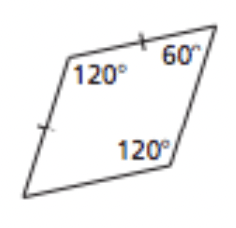
Rhombus
Rectangle ABCD is shown below. AB = 12, DE = 6.5, and measure of angle BDC=22.6 degrees. (1) What is the measure of angle DBC? (2) What is BC?
(1) 67.4 degrees
(2) 5
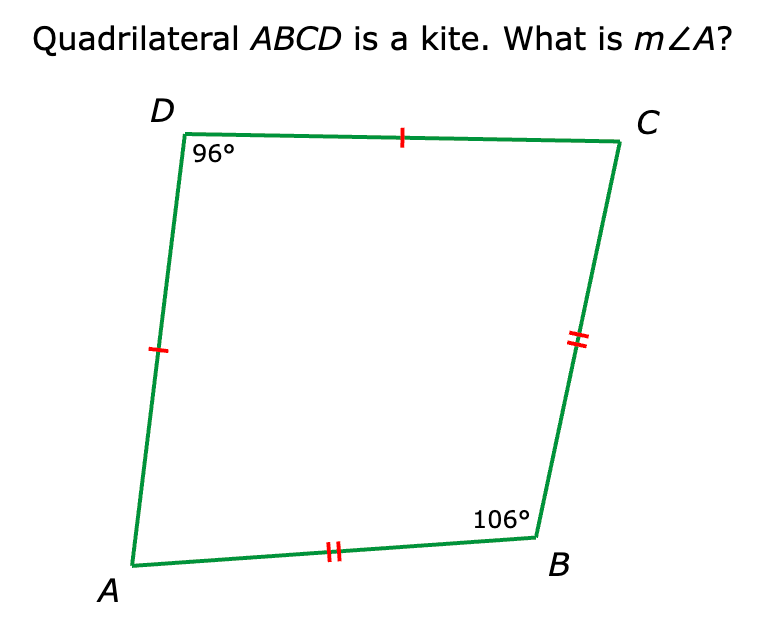
79
This quadrilateral has one pair of opposite sides that are parallel.
trapezoid and isosceles trapezoid
These quadrilaterals have diagonals that bisect each other.
Rectangles, squares, parallelograms, rhombus
Identify the quadrilateral using its' most specific name based off the information given, and cite the theorem used to make your conclusion.
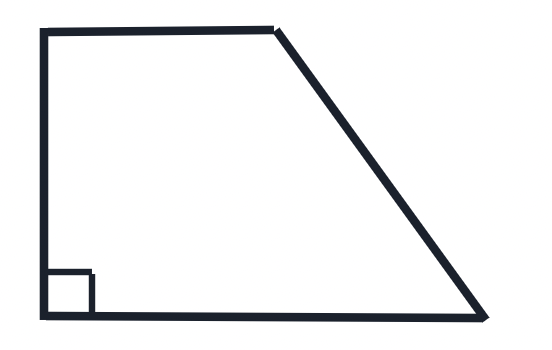
Quadrilateral
Parallelogram ABCD is plotted on the coordinate plane. The coordinates of A are at (2,-3) and the intersection of the diagonals is at point (1, 0). What are the coordinates of point C?
(0,3)

22